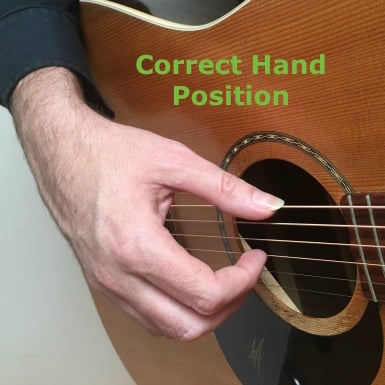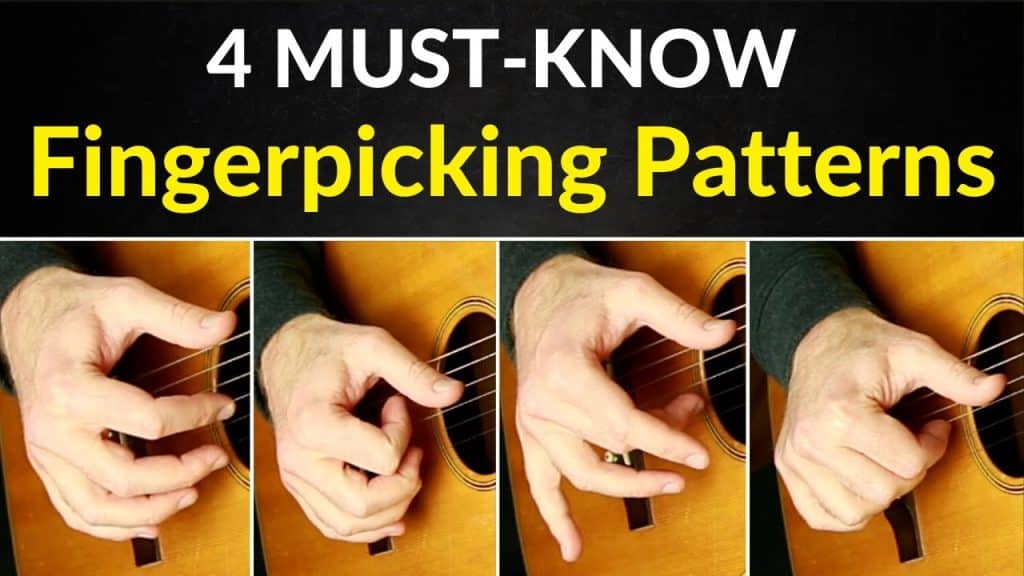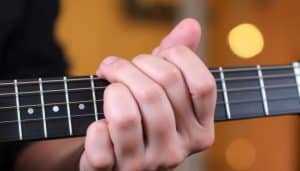If you’re a fingerstyle guitar enthusiast or someone looking to enhance your guitar skills, then this article is tailor-made for you. Prepare to be amazed as we explore the best fingerstyle guitar techniques that will take your playing to new heights. From intricate fingerpicking patterns to percussive slaps and harmonics, we’ll unravel the secrets behind creating beautiful melodies and rhythms using just your fingers. Whether you’re a beginner or an experienced guitarist, these techniques are sure to inspire and transform your playing. So grab your guitar and get ready to embark on a fingerstyle musical journey like no other.

Thumb Independence
Playing fingerstyle guitar requires good thumb independence. Developing strong thumb independence allows you to have better control over the bassline of a song while simultaneously playing melodies or chords with your fingers. Thumb independence is crucial in maintaining a steady rhythm and adding depth and complexity to your playing.
Thumb Placement
When it comes to thumb placement, there is no one-size-fits-all approach. However, a common thumb placement technique is to place your thumb on the back of the guitar neck. This allows your thumb to provide stability and serve as an anchor point for your hand while giving your other fingers the freedom to move and play individual notes or chords. Experiment with different thumb placements to find what feels most comfortable for you and allows for optimal thumb independence.
Thumb Picking Technique
Thumb picking technique is an essential aspect of fingerstyle guitar playing. The most commonly used technique is known as the “thumb brush” or “thumb roll.” To execute this technique, lightly brush or roll your thumb across the strings in a downward motion. This technique produces a warm and full sound, perfect for playing basslines or accompanying chords.
Thumb Bassline Patterns
Thumb bassline patterns are the backbone of fingerstyle guitar playing. Learning various thumb bassline patterns allows you to create a solid foundation for your songs and adds a rhythmic groove to your playing. Some common thumb bassline patterns include alternating basslines, where you alternate between two different bass notes, and walking basslines, where you walk up or down the scale using the thumb to play each note. Experiment with different patterns to add depth and variation to your fingerstyle playing.
Fingerpicking Patterns
Fingerpicking is a technique where you use your fingers to pluck the strings of the guitar individually, allowing you to play melodies, chords, and harmonies simultaneously. Mastering fingerpicking patterns opens up a world of possibilities on the guitar.
Alternating Thumb Pattern
The alternating thumb pattern is a fundamental fingerpicking technique that provides a solid foundation for many fingerstyle songs. It involves alternating the plucking of the bass string (usually with the thumb) and the plucking of the higher strings (usually with the other fingers). This pattern creates a smooth and rhythmic sound, perfect for playing folk, blues, or country-style fingerstyle songs.
Travis Picking
Travis picking is a popular fingerpicking pattern named after the legendary country guitarist Merle Travis. It involves using the thumb to play a steady bassline while the fingers pluck the melody or chords on the higher strings. This technique provides a rich and complex sound, often associated with country, ragtime, and blues styles of music. Travis picking requires finger independence and coordination, making it an excellent technique to develop your finger dexterity.
Arpeggio Patterns
Arpeggio patterns involve simultaneously plucking a chord with your fingers, playing each note individually in a sequence. This technique creates a beautiful and flowing sound, perfect for adding a melodic touch to your fingerstyle playing. Experiment with different arpeggio patterns, such as playing chords in ascending or descending order, incorporating open strings, or adding hammer-ons and pull-offs, to add complexity and expressiveness to your guitar playing.

Hybrid Picking
Hybrid picking combines elements of both fingerstyle and flatpicking techniques, allowing you to explore a wide range of sounds and styles on the guitar.
Combining Pick and Fingerstyle
Hybrid picking involves using a pick to play the bass notes or strum chords while simultaneously using your fingers to pluck melodies or individual strings. This technique gives you the best of both worlds, allowing for greater versatility and speed. You can easily switch between strumming and picking patterns, creating a dynamic and expressive sound.
Hybrid Picking Exercises
To develop your hybrid picking skills, it’s essential to practice a variety of exercises. Start with simple exercises, such as playing a bass note with the pick and plucking a melody note with your middle finger. Gradually increase the complexity by incorporating more strings, different chord voicings, or adding hammer-ons and pull-offs. Consistent practice of hybrid picking exercises will improve your coordination and finger independence.
Hybrid Picking Licks
Once you’ve mastered the basics, you can start exploring hybrid picking licks. These licks combine picking and fingerstyle techniques to create unique and intricate musical phrases. Experiment with different genres such as rock, blues, or jazz to find licks that resonate with your style. Incorporating hybrid picking licks into your playing adds a distinctive flair and showcases your technical abilities on the guitar.
Percussive Techniques
Percussive techniques involve incorporating percussive sounds into your fingerstyle guitar playing, adding rhythmic and textural elements to your music.
Slap and Pop
Slap and pop techniques are commonly associated with bass guitar playing, but they can also be used on the acoustic or electric guitar. Slapping involves striking the strings with the flesh of your thumb, creating a percussive sound. Popping refers to pulling and releasing the strings with the fingers, creating a snappy sound. Incorporating slap and pop techniques into your fingerstyle playing can add a funky and energetic vibe to your music.
Palm Muting
Palm muting is a technique used to dampen or mute the strings slightly with the palm of your hand near the bridge. This technique creates a dry and percussive sound, similar to a drumbeat. Palm muting is often used in rock and funk styles of music to add rhythmic accents and articulation to your playing.
Body Percussion
Body percussion involves using your body as a percussive instrument while playing the guitar. This can include tapping your foot, clapping your hands, slapping your thighs, or even using your chest as a drum. Incorporating body percussion into your fingerstyle playing adds a unique rhythmic element that enhances the overall musical experience and engages the audience.

Open Tunings
Open tunings involve tuning the guitar strings to form a specific chord when strummed open (without pressing any frets). These tunings offer a different sonic palette and make it easier to play certain chords or create unique harmonies.
Popular Open Tunings
There are several popular open tunings, each with its own unique sound and characteristics. Some common open tunings include Open D (D A D F# A D), Open G (D G D G B D), and Open C (C G C G C E). These tunings are widely used in folk, blues, and slide guitar playing. Experimenting with different open tunings can inspire new musical ideas and unlock a fresh sound on the guitar.
Chord Shapes in Open Tunings
Using open tunings allows you to create chord shapes that are different from standard tuning. In open tunings, strumming all the open strings forms a full chord. By using a simple barre or partial barre across the fretboard, you can easily play different chords with fewer finger movements. This provides a unique voicing and allows for interesting chord progressions and harmonies.
Melodic Riffs & Harmonies
Open tunings offer exciting melodic possibilities, allowing you to create riffs and harmonies that are not easily achievable in standard tuning. Since the strings are already tuned to a particular chord, playing single-note melodies or harmonizing with the open strings becomes more accessible. Explore different fingerpicking patterns, slides, and bends to create captivating melodic riffs and harmonies in open tunings.
Harp Harmonics
Harp harmonics, also known as natural harmonics or chime harmonics, produce bell-like tones on the guitar similar to those of a harp. Utilizing harp harmonics adds a magical and ethereal quality to your fingerstyle playing.
Harmonics Technique
To produce harmonics, lightly touch the string over a specific fret and pluck the string with your finger or thumb. This creates a bell-like sound as the string vibrates in its natural harmonic frequency. Different frets produce different harmonics, with the 12th fret being the most commonly used. Experiment with various frets to discover the harmonics that resonate with you.
Creating Chordal Harmonics
Chordal harmonics involve playing harmonics on multiple strings simultaneously, creating lush and vibrant chords. To achieve this, use your fingers to lightly touch the appropriate frets on each string and pluck them simultaneously. The resulting sound is a beautiful and shimmering chord, perfect for adding texture to your compositions or improvisations.
Harmonics in Melodies
Incorporating harmonics into melodies adds a unique touch to your fingerstyle playing. Instead of fretting the notes, lightly touch the strings over the desired frets to produce harmonics. This technique provides a delicate and expressive sound, creating a beautiful contrast to regular fretted notes. Experiment with different melodies and harmonics to create captivating and mesmerizing musical passages.

Walking Basslines
A walking bassline is a technique where the bass notes are played in a continuous line, creating a rhythmic and melodic foundation for your fingerstyle playing.
Bassline Definition
The bassline refers to the lowest notes in a chord progression or melody. In fingerstyle guitar, the bassline often follows a walking pattern, where the notes are played in a steady and ascending or descending sequence. This technique provides a rhythmic drive and adds depth to your playing.
Root Note Walking Bass
The root note walking bassline is a simple yet effective technique that involves playing the root notes of each chord in succession. By following the chord progression and adding the appropriate root notes in a smooth and rhythmic manner, you create a solid foundation for your fingerstyle playing. Practice this technique with different chord progressions to internalize the concept of walking basslines.
Chromatic Walking Bass
Chromatic walking basslines involve adding chromatic passing notes between the root notes of each chord. These passing notes create tension and resolution, adding a jazzy or bluesy flavor to your fingerstyle playing. Experiment with different chromatic patterns and incorporate them into your bassline to add variety and expressiveness.
Tricky Chords
Tricky chords are challenging to play but add complexity and richness to your fingerstyle arrangements. Mastering these chords will enhance your playing and allow you to tackle more advanced arrangements.
Barre Chords
Barre chords involve using one finger (usually the index finger) to hold down multiple strings across the fretboard, simulating the sound of open chords further up the neck. Barre chords are moveable and allow you to play various chord shapes using the same fingering. They require finger strength and accuracy, but once mastered, they unlock a wide range of possibilities for your fingerstyle playing.
Stretch Chords
Stretch chords require you to stretch your fingers across multiple frets, playing notes that are several frets apart. These chords often involve complex fingerings and can feel uncomfortable at first. With practice, your hand and finger muscles will become more flexible, allowing you to reach and play these stretch chords comfortably. Stretch chords add unique voicings and harmonies to your fingerstyle playing, making your arrangements stand out.
Chord Inversions
Chord inversions involve rearranging the notes of a chord so that a different note becomes the lowest or bass note. This produces a different voicing and can add color and variety to your fingerstyle playing. Experiment with different chord inversions, such as playing a III chord with the V note as the bass note, or an inverted V chord with the VII note as the bass note. Incorporating chord inversions in your fingerstyle arrangements creates interesting harmonies and melodic movement.

Thumb Slaps
Thumb slaps are percussive techniques that involve striking the strings with the thumb, creating a distinct and punchy sound. Adding thumb slaps to your fingerstyle playing provides rhythmic accents and adds a dynamic element to your arrangements.
Slap Technique
To perform a thumb slap, bring your thumb down forcefully onto the bass strings, striking them with the fleshy part of your thumb. This technique creates a percussive and vibrant sound, similar to a drumbeat. By combining thumb slaps with other fingerpicking techniques, you can create intricate and groovy rhythms on the guitar.
Double Thumb Slap
Once you’ve mastered the single thumb slap, you can explore the double thumb slap technique. This involves slapping the bass strings twice in rapid succession, creating a more complex and syncopated rhythmic pattern. Double thumb slaps add excitement and flair to your fingerstyle playing, allowing you to showcase your percussive abilities.
Slap Bass Rhythms
Slap bass rhythms can be adapted and applied to fingerstyle guitar playing. By using thumb slaps in combination with other fingerpicking patterns, you can create rhythmic grooves that emulate the sound and feel of a bass guitar. Experiment with different slap patterns and incorporate them into your fingerstyle arrangements to create a unique and funky sound.
Fingerstyle Blues
Fingerstyle blues is a genre that combines fingerpicking techniques with the soulful and expressive elements of blues music. Mastering fingerstyle blues allows you to capture the essence of this genre and create emotive and captivating guitar arrangements.
Blues Fingerpicking Patterns
Blues fingerpicking patterns often involve combining thumb patterns with syncopated rhythms and blues scales. The alternating thumb pattern is a common foundation for many blues fingerpicking patterns, providing a steady bassline. Experiment with adding slides, bends, and hammer-ons to the patterns to create authentic blues sounds. Fingerstyle blues playing emphasizes the use of the thumb and index finger to create a driving rhythm while allowing the other fingers to add melody and embellishments.
Turnarounds
Turnarounds are essential devices in blues music that create tension and resolution, signaling the end of a musical phrase or section. Incorporating turnarounds into your fingerstyle blues playing adds authenticity and gives your arrangements a distinct blues flavor. A classic turnaround involves using the IV and V chords to create a descending bassline, resolving to the I chord. Practice different turnaround patterns to enhance your fingerstyle blues vocabulary.
Slide Guitar Techniques
Slide guitar is a technique commonly associated with blues playing that involves using a slide (typically made of glass, metal, or ceramic) to glide along the strings, producing expressive and soulful sounds. Incorporating slide guitar techniques into your fingerstyle playing allows you to imitate the sound of blues legends and add a unique touch to your arrangements. Experiment with different slide techniques, such as slide vibrato or slide harmonics, to create a rich and evocative sound.
Mastering these fingerstyle guitar techniques will open up a world of possibilities and elevate your playing to new heights. Remember to practice consistently, experiment with different styles and genres, and most importantly, have fun while exploring the diverse sounds and techniques of fingerstyle guitar playing. Happy playing!






